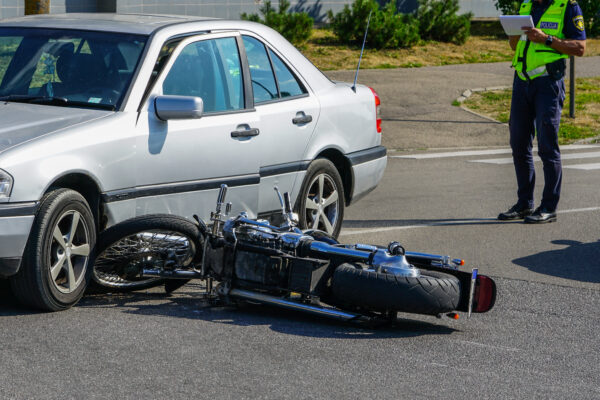
In an intersection accident, who’s at fault is as much about assigning legal responsibility as fair compensation for the injured. Running a stop sign, failing to yield, misjudging the speed of approaching traffic, or an errant turn signal—all can lead to an unwanted collision. For victims, it’s important to determine who’s at fault in an intersection accident to ensure they receive compensation for their losses and injuries.
Why Are Intersections Dangerous?
How do intersections pose such a risk to drivers and pedestrians alike? The FHWA (Federal Highway Administration) attributes nearly 50% of all traffic injuries in the United States, and roughly a quarter of traffic fatalities, to intersection accidents. By definition, intersections are connection points where people driving, motoring, walking, or bicycling from one place to another pass through to get to their destination. Because traffic is directed to these connection points, where they intersect and cross or join are, by design, busy, if not congested, places. Where there is more traffic, there is an increased likelihood for accidents to happen.
Types of Intersections
Varying in size and complexity, intersections can challenge the best of drivers for several reasons. There are four-way intersections, angled Y or fork intersections, T-shaped intersections, large roundabouts, and small traffic circles. In some older towns and cities, there may even be five or more points that intersect. Adding to the confusion, intersections can be one or more lanes wide, with traffic lights, stop signs, yield signs, or no signage or lights.
Determining Fault in Intersection Accidents
In an intersection accident, determining who’s at fault is necessary for several reasons, including fair compensation. Individuals, by no fault of their own, should not have to bear the financial burden of the accident. When fault is properly assigned, it ensures that the at-fault party is held accountable for their negligent actions and that victims receive compensation for their injuries, property damage, and other losses.
Though assigning fault carries with it legal responsibilities, determining fault is essential for allocating financial responsibility. It is not always as straightforward as it may appear. Maine is an at-fault state, meaning the at-fault party’s insurance company typically bears the financial responsibility for covering damages and medical expenses. However, fault and how it is assigned in at-fault states can be relative. As Maine is an at-fault state with “modified comparative negligence laws,” determining who is at fault, which has a direct bearing on determining liability and negligence, maybe, in some circumstances, shared.
Typically, fault is assigned through the collection of physical evidence by police and investigators, as well as eyewitness statements. Under Maine’s “modified comparative negligence laws,” more than one driver can be held partly liable for an accident. If that’s determined, then the driver who is only partially at fault will receive only a percentage of the compensation. Per Maine law, drivers who are less than 50% at fault may only collect the balance of the available percentage. If it is determined that you were, say, 20% responsible for an intersection car accident, then you are only eligible to recover 80% of the damages. It also means that if you are 50% or more at fault, you will not be eligible to collect any damages from the other driver. Though this rule would not apply to passengers in vehicles, it could be applied to pedestrians if it is determined that they were partially at fault for an accident.
Types of Collisions at Intersections
Several types of car accident collisions occur at intersections, each with its own set of potential causes.
- The most common intersection car accident is the T-bone collision, also called the side-impact or broadside collision. As the name suggests, a T-bone collision occurs when the front end of one vehicle collides with the side of another, causing a “T-shaped” impact between cars. These intersection accidents are often the result of a driver running a stop sign or red light, failing to yield the right of way, or making a left turn without proper clearance.
- Another common intersection car accident is the rear-end collision. Rear-enders often happen due to distractions such as texting while driving, sudden braking when the lead car stops short, or during poor weather conditions when roads are slippery. In most cases, rear-end accidents could be averted by maintaining a safe distance between vehicles to allow the rear driver enough time to prevent a collision.
- Head-on collisions, or frontal collisions, are not entirely common at intersections but happen nonetheless. When the front ends of two vehicles collide, it’s usually the result of one driver entering an intersection the wrong way against traffic or if a driver crosses a center divider. Causes for a head-on collision at an intersection can range from driving distracted or fatigued to driving impaired. Simple confusion over the right-of-way at a stop sign, entering the wrong way on an entrance ramp, or failing to yield at an angled intersection can also cause a head-on collision at an angle. Besides failing to yield, angle collisions happen when one vehicle attempts to make a turn and misjudges the distance and speed of the oncoming vehicle.
- Pedestrian and cyclist accidents also occur at intersections. Drivers running a red light can put a pedestrian or cyclist at great peril. Some drivers turning may not yield the right of way to pedestrians or cyclists at crosswalks. They could be distracted or rear-ended by another car that did not observe an active crosswalk.
Confusion, distraction, carelessness, or misjudgment by a driver or drivers can lead to intersection accidents. What’s important is determining who’s at fault to make sure that those responsible for accidents bear the consequences. If you have been injured in an intersection accident due to driver negligence, contact the law offices of Hardy Wolf & Downing to speak with one of our experienced car accident lawyers for a free consultation. We work on your behalf to ensure that you receive the compensation that you deserve.

